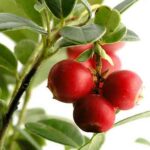 Urinary tract infections are the most common medical complication in people with spinal cord injury.
Urinary tract infections are the most common medical complication in people with spinal cord injury.
Researchers at the University of Guelph, in Ontario, reviewed the evidence for cranberry to prevent or treat these infections and found it lacking.
First, the details.
- 5 studies evaluated cranberry products to prevent or treat urinary tract infections in spinal cord injury patients.
- 3 studies compared cranberry tablets vs placebo.
- 1 compared cranberry juice vs placebo.
- 1 preliminary (pilot) study used cranberry juice.
And, the results.
- 3 studies reported no significant effect of cranberry tablets on urinary pH, urinary bacterial count, urinary white blood cell (WBC) count, urinary bacterial, and WBC counts in combination or episodes of symptomatic urinary tract infections.
- A 4th study showed that cranberry juice intake significantly reduced biofilm load compared with baseline.
- Biofilm is an aggregate of microorganisms in which cells adhere to each other and/or to a surface (such as the urinary tract).
- A final study reported fewer urinary infections while taking cranberry extract tablets vs placebo.
The bottom line?
The authors concluded, “Limited evidence from clinical trials that vary in design suggests that cranberry, in juice or supplement form, does not seem to be effective in preventing or treating UTIs in the SCI population.”
Other reviewers of cranberry in a wider range of urinary tract infections generally agree with this conclusion. Although a Cochrane review concluded, there’s some evidence that cranberry juice may decrease the number of symptomatic urinary tract infections, particularly in women with recurrent infections.
I’m aware of 2 (not 1) studies that evaluated cranberry extract to prevent urinary tract infection. The first was in 137 women with recurrent infection, and the second in 47 women with spinal cord injury and neurogenic bladder. Both studies reported positive results with the extract.
This suggests that greater effectiveness depends on high concentrations of the active ingredient in the cranberry preparation, which is more likely be achieved with the extract, but not with other forms.
9/9/10 19:19 JR